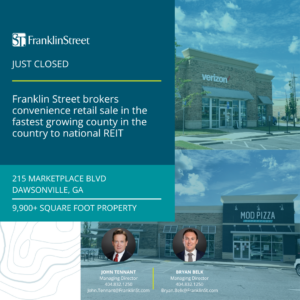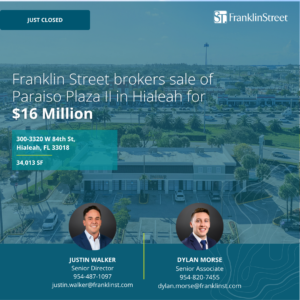MIAMI—The first hurricane to hit Florida in nearly 11 years could rise up this weekend. Known only as 99L, there’s a 60% chance a storm system in the Atlantic could develop into a tropical storm named Hermine.
With that in mind, GlobeSt.com caught up with Evan Seacat, a senior director atFranklin Street, to get his take on what commercial real estate owners need to know in part two of this exclusive interview. You can still read part one: Why Some CRE Owners Are Skipping Hurricane Insurance.
GlobeSt.com: What kind of coverage and conditions do lenders place on the hurricane policies they require property owners to have? Given that not all lenders have the same requirements, does it pay to shop lenders and insurers at the same time?
Seacat: While I am not a capital/lending specialist, experience has shown me that it’s advantageous to look at lenders and their specific insurance requirements. Some lenders are more thorough with their requirements.
GlobeSt.com: When do insurers usually stop writing policies? Is it enough to call an agent and get a “yes” from that person?
Seacat: Coverage cannot be bound, altered or amended through an e-mail or voicemail. A client must speak directly with a representative of its respective agency to ensure any and all issues are handled.
When a storm gets within a certain area of the coast of Florida, all insurance carriers will put a compulsory restriction on new business being bound. Please keep in mind that at renewal of a policy, the premium must be in the hands of the current insurance carrier before this restriction occurs. Specific binding restrictions vary by carrier.
GlobeSt.com: Let’s say a storm damages a building so badly that repairs or replacement will require bringing the building up to current code. Is that covered under a hurricane policy?
Seacat: No. Owners need law-and-ordinance coverage.
Older buildings that are damaged might need electrical, heating, air-conditioning, plumbing, or additional updates based on current city codes. Most areas have ordinances that require a building to be demolished and rebuilt in accordance with current building codes rather than simply being repaired.
The extent of damage is typically 50%. Law-and-ordinance coverage provides coverage for: loss of the undamaged portion of the building; cost of demolishing that undamaged portion of the building; and the increased cost of rebuilding the entire structure in accordance with any and all building codes.



